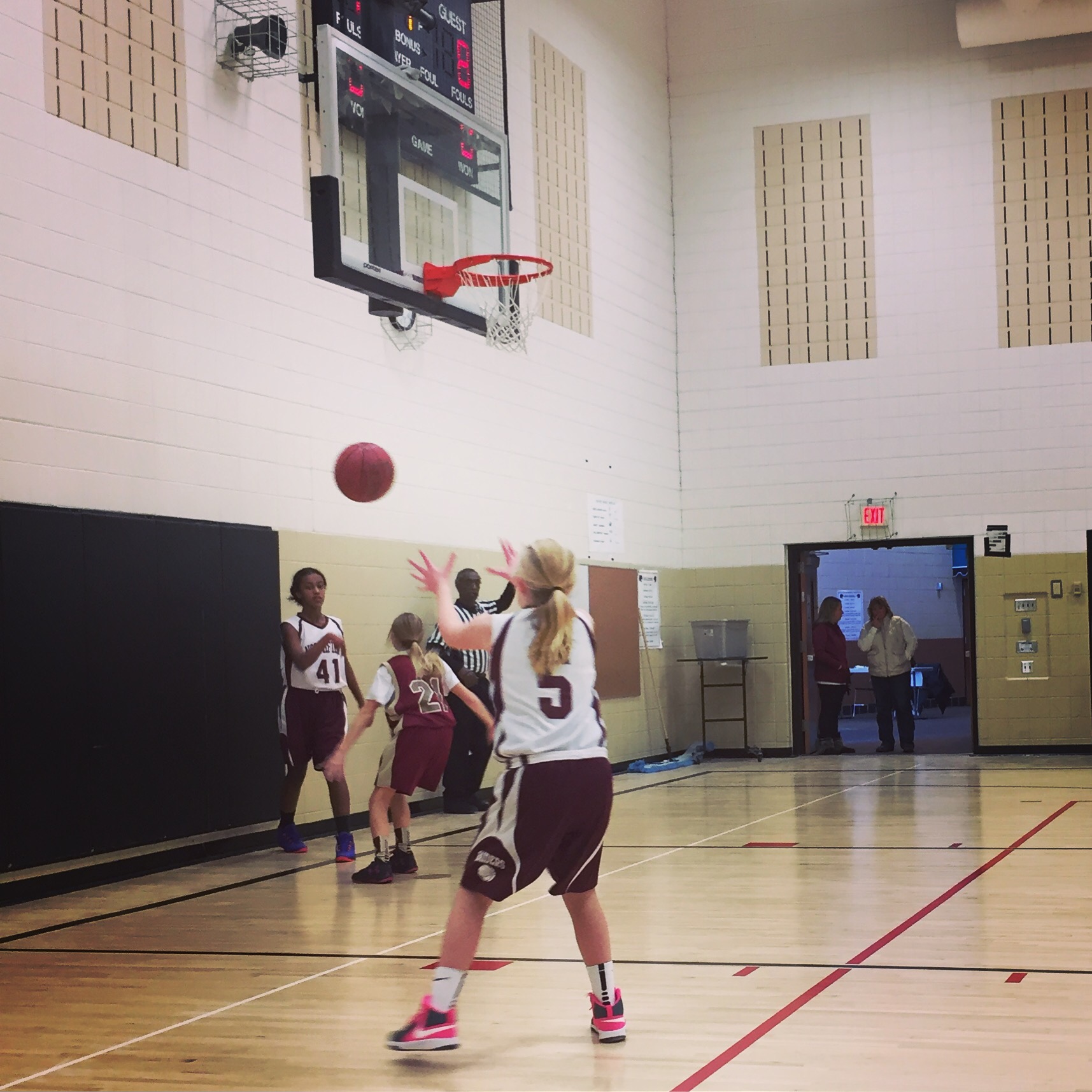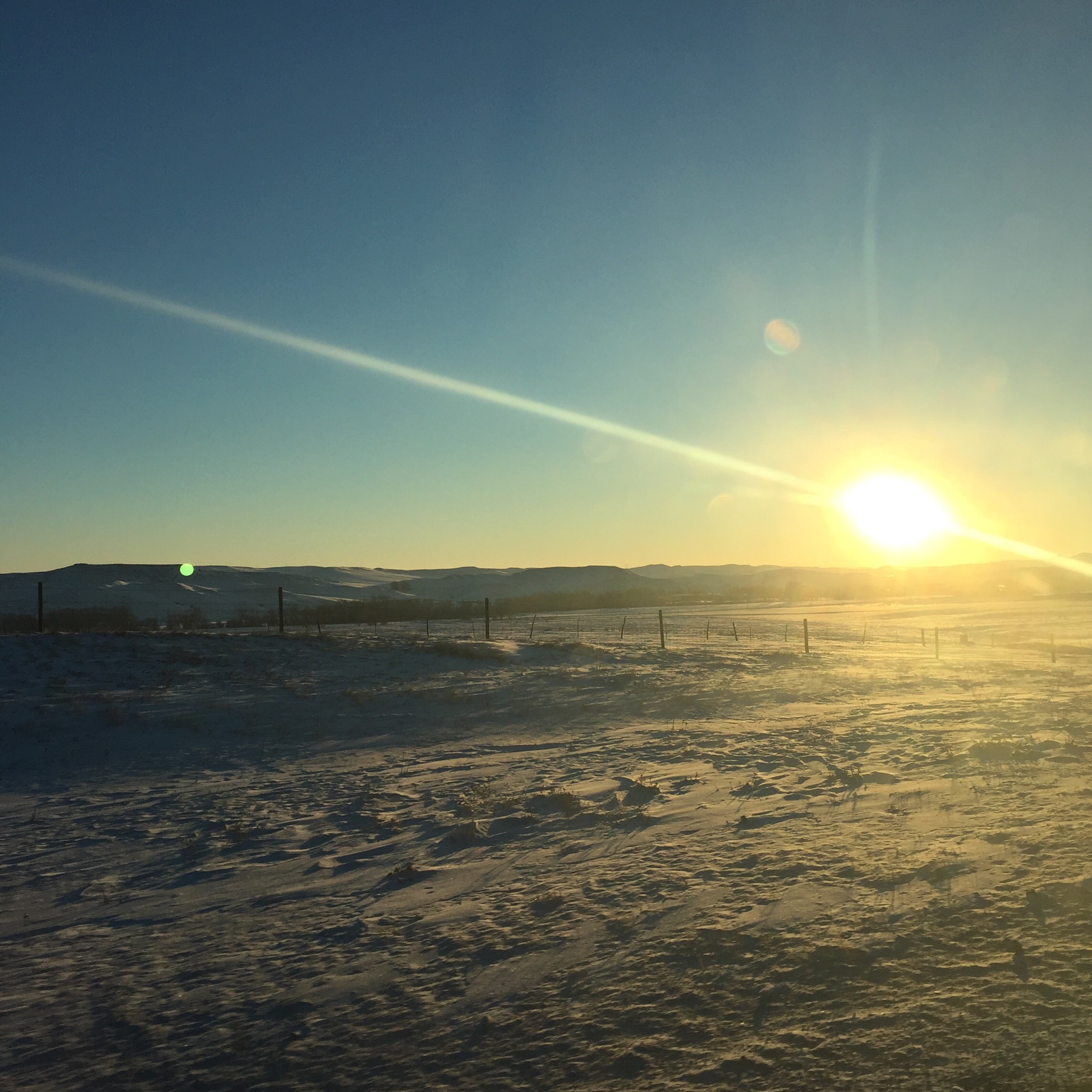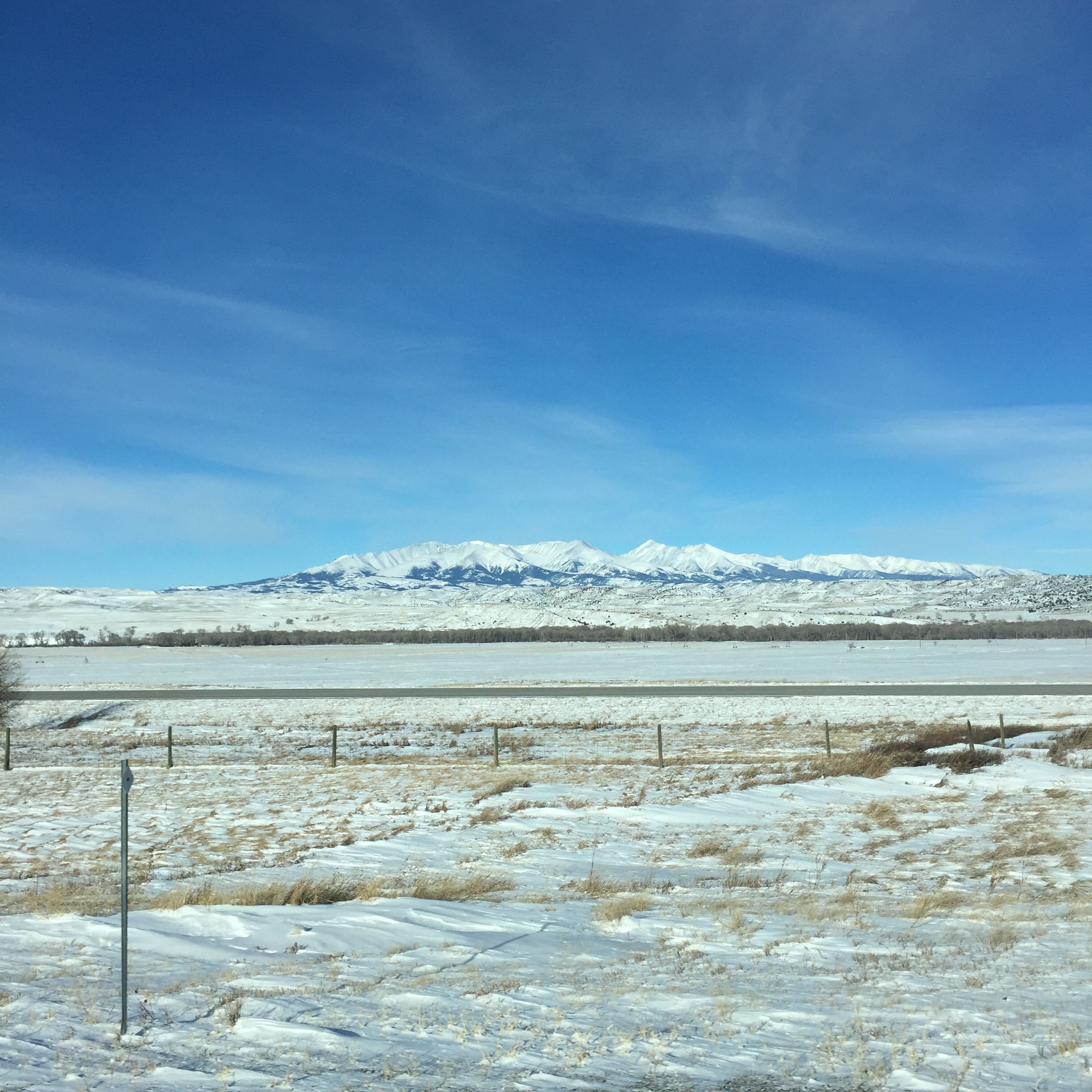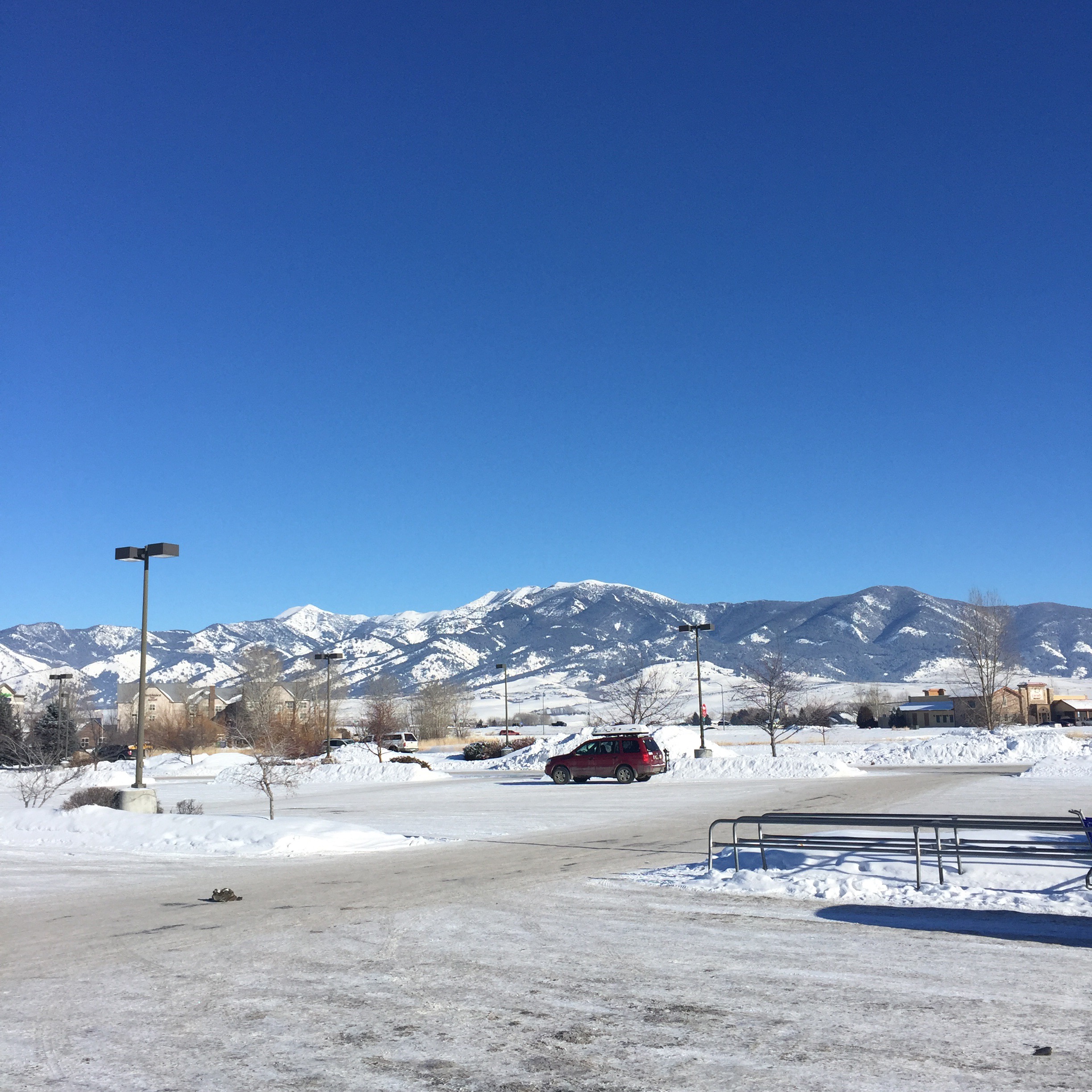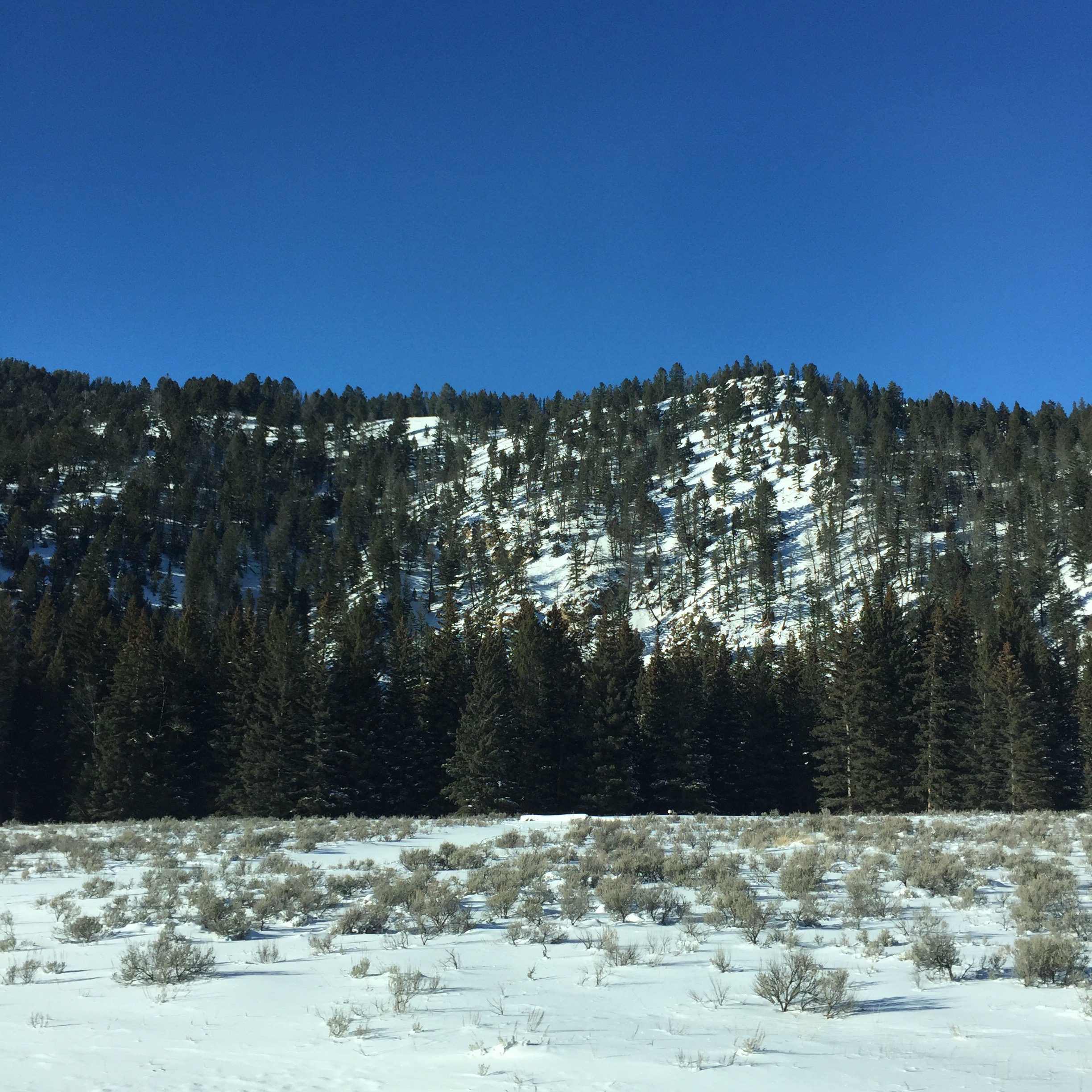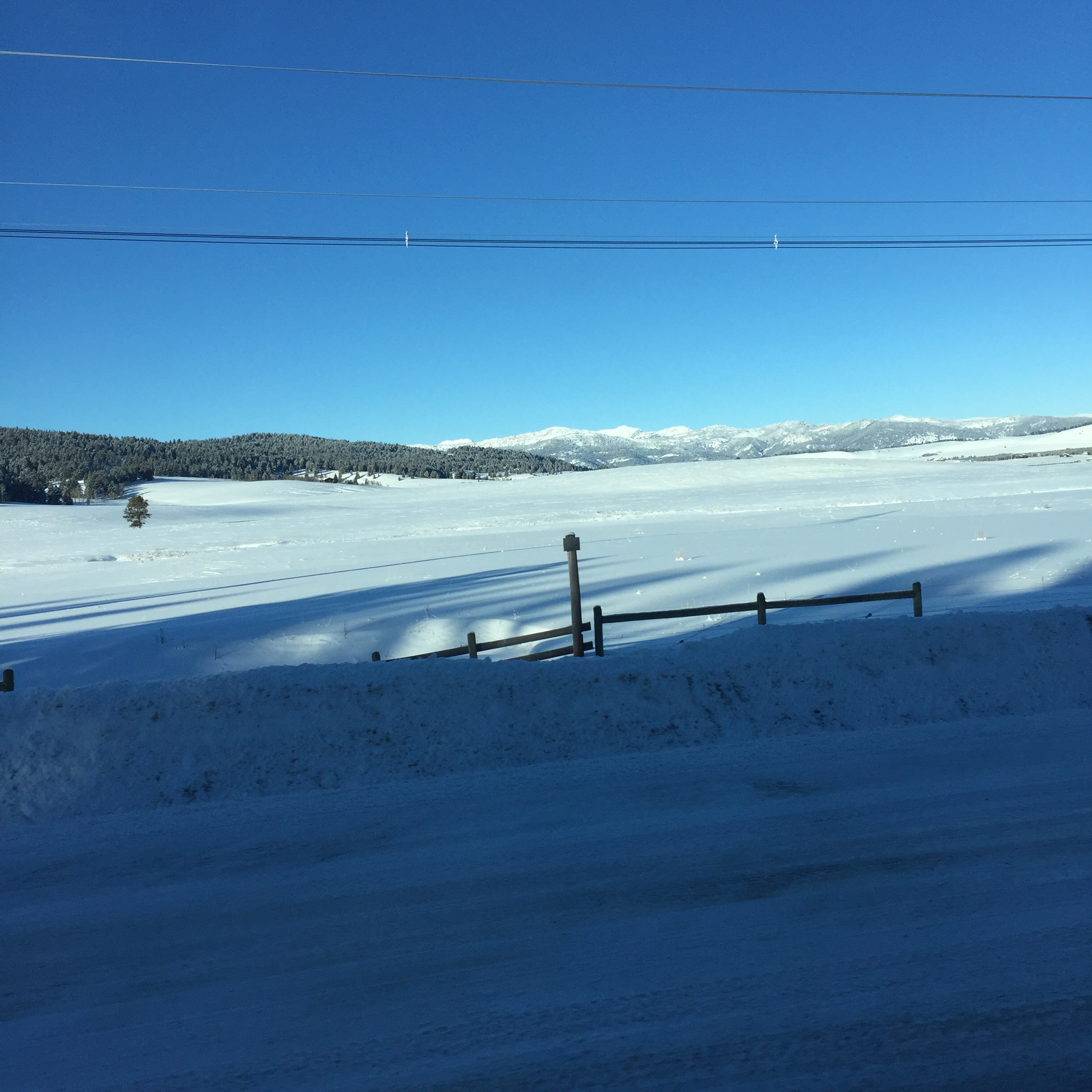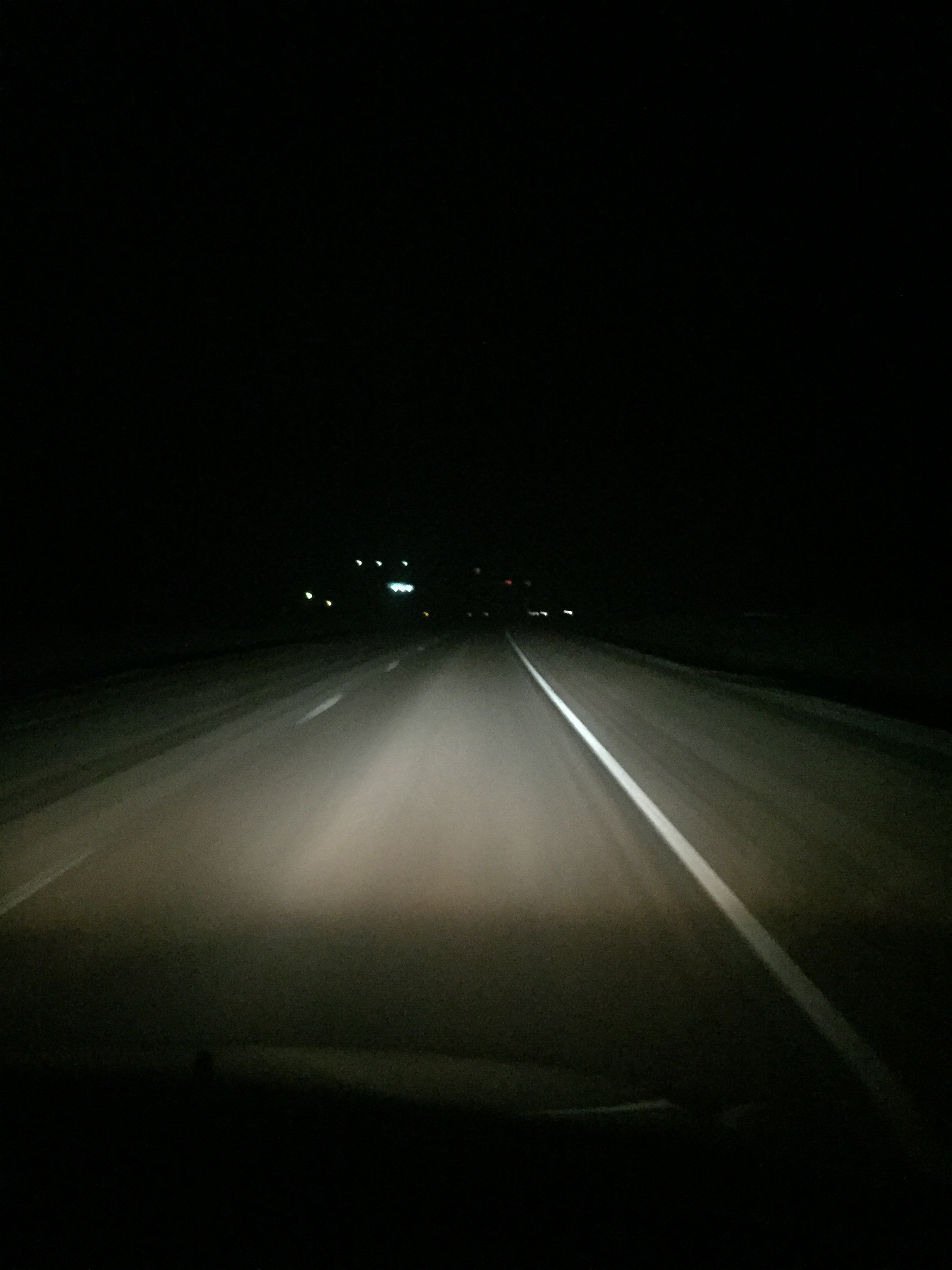My 2017 Fat Pursuit was extraordinary – the course, the weather, the scenery, the effort, the effects.
Though I didn’t reach the finish line this year, I had a hell of an adventure: 55 hours and 167 miles of riding my fatbike, the Buffalo, through a surpassingly beautiful, harsh, and rewarding place. Racing the Fat Pursuit was a privilege and a challenge and a joy. I can’t wait to go back next January.

The Fat Pursuit as an event has three separate races: a 60-kilometer race run in December and then a pair of 200s run the same weekend in January – the 200-mile in which I was competing, starting at 5 p.m. Mountain time on Friday, January 6, and a 200-kilometer (126 mile) race that started the next morning.
By race day, I had been preparing for a year – or maybe longer. I had done the 200k distance at the first and second Fat Pursuits in 2014 and 2015, but I missed the first year of the new 200-mile distance in 2016. I burned up my regrets over my absence at the edition by doing a lot of training – more and better riding, including more races, than I’d ever done as well as hundreds of hours of work in the gym. I also did a wide range of other preparation: testing literally every piece of required (and optional) equipment, studying the course to the point of memorizing segment distances, ironing out travel and lodging, visualizing myself riding (not walking!) past the Continental Divide marker and under the finish line arch…
When I left for Idaho with my friend Ben Doom two days before the race, I felt as ready as I could possibly be. On the long, fun drive out west, we talked about the course, about our bikes and equipment, about other racers, and about the weather, which looked daunting: extreme cold on Friday night, the first night of the race, then the possibility of snow later in the weekend, during what would probably be the last half of my race. I’ve done okay in cold weather, but fresh snow makes for slow riding.
We reached the race HQ at Pond’s Lodge in Island Park, Idaho, early Thursday afternoon, right on schedule. We checked in at the registration table, where I was assigned race number 9, and went through the gear check, which race director Jay Petervary – “JayP” – insisted on running on the sidewalk outside the lodge, with his two dogs running around like maniacs and snowmobiles – “snowmachines” in Western parlance – revving in the parking lot. When we finally headed over to our luxurious cabin, at the back of the Pond’s property, I was pretty confident that I would be able to go for 30 or even 40 hours – perhaps a bit longer if the extra time ensured a finish.
Staying in a cabin with a dozen other racers – some doing the same 200 mile race as Ben and me, some the 200 kilometer race that started on Saturday morning – I soaked up their excitement and their knowledge. I think I made a good half-dozen tweaks to my bike and equipment based on our conversations in front of the fire. A couple favorites: use the capacious zipper pockets on the underside of my pogies (the big, funny-looking overmitts that most fatbike era mount over their handlebars) to store stuff like nutrition gels and extra gloves or hats, and loop my dry bag buckles through my bottle cage so that the bag can’t bounce out.
At noon on Friday, we all trooped over to the racer meeting, at which JayP gave a surprisingly causal overview of the race course. Cold-cut sandwiches there for lunch, then back to the cabin, quieter now as we handled final prep and got our minds right for the start of the race. I stuck to my plan for the afternoon. Get dressed in all my race gear: wind briefs and wicking shirt, compression socks and thick wool socks, upper and lower thermal base layers, heavyweight cycling pants, synthetic soft shell jacket, wind vest, neck wrap, heavyweight gloves, thick wool cap, cycling boots, clear-lens glasses. Take short ride on (and shoot live video during!) the first section of the course. Hang out for a few minutes with an old friend who’d come up from Jackson Hole to see the start of the race. Double-check that all my extra clothes were accessible: down hat, fleece mittens, light gloves, headband. Install fresh batteries in all my devices (headlight, headlamp, bike computer, hearing aids). Get to the start line in plenty of time. Pose for pictures – so many pictures: pre-race solo portrait,

group photo with my cabinmates, shot of all the starters under Pond’s arch…
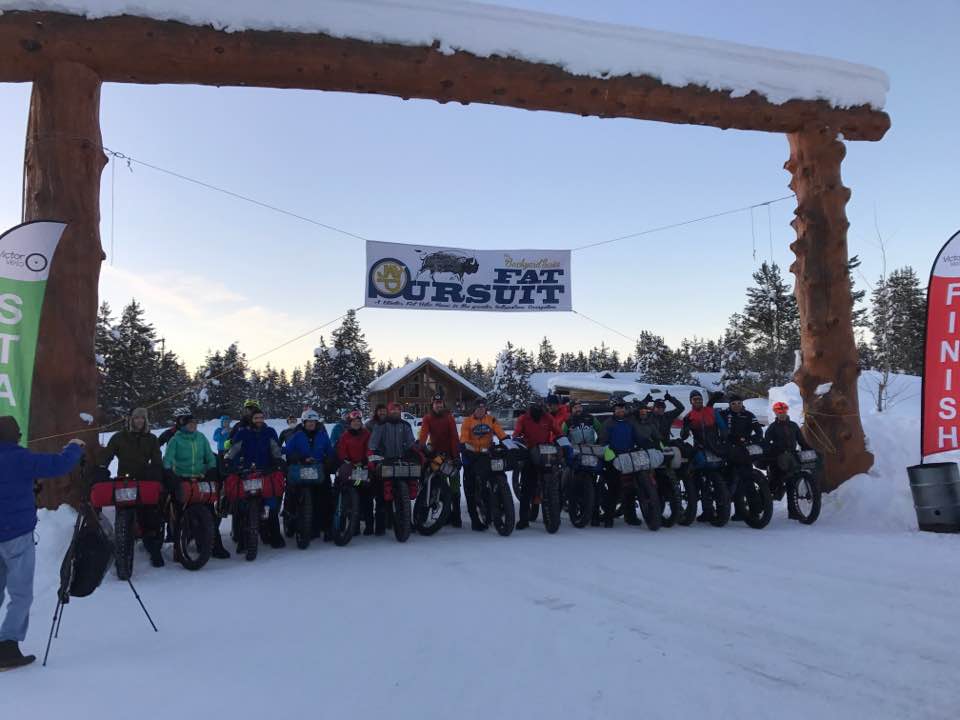
Finally, just before five, Mike Riemer from Salsa Cycles, the main sponsor of the race, gave a short pep talk. While I listened, I reset my computer to get good data for the next 24 or 36 or 48 hours. The screen showed a temperature of -9º F, but I refused to believe it. I felt warm and happy and ready. We cheered the race volunteers and especially JayP, who then sent us off with a simple “Three, two, one, go!” My eyes welled up unexpectedly, but now we were rolling. There’s no crying in bike racing!

Section 1: From the Start to Checkpoint 1 (81 miles, 5:00 p.m. Friday till 11:30 a.m. Saturday)
The opening miles of the course routed us south over flat, fast trails along the Henry’s Fork of the Snake River – a famous and gorgeous fly-fishing creek. In a long loose line, we passed the ominously-named Last Chance resort, a few buildings at a wide spot in the river where the sunset shot light through the steam rising off the black water. Dozens of trumpeter swans were settling in for the night. I jockeyed with other riders for good lines on the trail, but tried as much as possible to absorb the beauty – the river and trees around me, the sunset fading to my right, the blinking lights and hunched shapes on the bikes in front of me.
Soon after Last Chance, we turned right, for a loop through Harriman State Park. Full dark. Headlamp and headlight on. -15º showing on my computer. Dismount and get in the queue of riders lifting bikes over the gate into the park. Take the moment to pop a gel and a sip of water. Back on the bike. Catch up to some riders, get caught by others. Greet Jill Martindale, going well on her splatter-painted Salsa Beargrease, Miami Vice, early in her own extraordinary adventure. Study a mechanically regular line of feline tracks running along the edge of the trail. Climb and descend the low hills. Glance at the black bulk of a bluff in the near distance – the rim of the Island Park caldera. Keep things smooth as the trail leaves the flat open fields and enters thick evergreen forest.
This narrower, tighter riding was tricky – a mental test. I’m not a very good rider on singletrack under perfect circumstances, but now I was maneuvering a 50-pound fatbike and trying to not to slow down the riders behind me. Their multiple headlights cast numerous overlapping shadows of me down the trail – negative racer #9s, to match the negative temps. -10° in higher warm spots, -20° in lower cold ones. Watching the mileage on my computer, I could tell we were nearing the end of the Harriman section, and soon enough the trail spit us out on an access road that in turn led us across the highway, exactly 10 miles straight south of Pond’s.
181 miles to go. I stopped for more food and a gulp of water, but my hydration pack hose was frozen. Uh-oh. I dry-swallowed the trail mix and tucked the hose deeper under my clothing, hoping my body would thaw it. As I chewed another mouthful of trail mix, I dug out a set of backup clothing. A headband went across my nose and mouth, a new layer of insulation against the headwind. I pulled off my headlamp to fit my down beanie over my cycling cap, then put the lamp back on my head. I loved seeing the bright yellow spot of light it cast wherever I looked. I pulled my down jacket from my seat pack and put it on too, being careful to pull both my shell’s and the jacket’s hoods up over the headlamp straps. Finally I snuggled my gloved hands into fleece mittens. Armored up. 8:00 exactly. Three hours in.
I knew from my course notes that the next section was mostly downhill, running sixteen miles from the flats of Harriman at 6,100 feet to the lowest spot on the course – the Warm River campground at 5,200 feet. Jay had suggested at the race meeting that Warm River would perversely probably be the coldest spot on the course, thanks to the berg of frigid air that would likely settle there overnight, so as I pedaled southeast across some open country toward the trail to the campground, I looked at my computer to get a sense of how cold it was right now. The temperature readout was blank. I tapped the screen. A flicker. -29° appeared. I could feel a headwind blowing. Cold that cold feels solid. A spring or summer headwind pushes back at you. A winter headwind like this encases you. Han Solo in carbonite, delivered to Jabba the Hutt.
I was happy to make the turn south toward Warm River, into the trees and out of the wind. This riding was fast, often easy, but the extra speed intensified the cold. My hands would go dead and come back, numb and revive, though I told myself this was more from a nervously tight grip on the bars than from the cold. Loosen up. Light hands. I pulled each hand in turn out of its pogie and shook it, warming the fingers. My toes too were getting cold. I flexed each foot and pointed each toe in turn. This little piggy went to market.
About two-thirds of the way to Warm River, the race detoured to Mesa Falls, a gorgeous cascade where the Henry’s Fork pours over the edge of the Island Park caldera. At the falls, racers had to go on foot to retrieve a piece of candy that we’d show volunteers at the first checkpoint – after 45 more miles and the rest of the long night. A cluster of lights up the trail told me that I was approaching the spur to the falls. Hooking a sharp right turn, I plunged down the steep, winding road to the falls, cursing because I knew I’d have to climb every damn foot of the road to get back to the trail. Fuck fuck fuck fuck. Now my hands were numb for real. Feet too. I couldn’t feel them at all. Glancing at my computer, I though I saw a reading in the -30° range, but I was going too fast to be sure.
Finally I reached the bottom of the road. 9:41 p.m. 33 miles into the race. A sixth of the full distance. A big park building loomed in the dark, shuttered for the night if not the season. Another rider pulled up just as I dismounted. We instinctively started heading down the only path we could see. Another racer came back up path toward us. “What are we doing here?” he asked. “The path just kinda peters out!” I told him we were supposed to get some sort of candy to save for the first checkpoint. “Oh yeah, the fucking candy! I shoulda paid more attention at the meeting.” He fell in behind us as we walk-jogged further down the path. I could hear a dull roar – the falls. Off the Buffalo, my legs felt like they were being misused. Cold wet air billowed up from the river below us. Finally, we saw two crude wooden stakes with a plastic grocery bag tied between them. Mr. Confusion lunged around me and grabbed one of the candies – golfball-sized cordials for a local confectioner. Some sort of JayP joke. I chose a blue one to match my bike’s bags.
We made our way back up the path to the parking lot where our bikes waited. I put the candy prize in the bag on the front of my bike, tucking it into an interior pocket so that it could not, would not fall out even if I dumped my bike and tore the bag open. Standing there, my feet felt dead. I needed to do something for them. No time like the present. Take off my mittens, lay them on my pogies. Unzip the right side of my frame bag. Find my stash of chemical handwarmer packets. Pull out two pairs. Lay one on the pogies next to the mittens, rip open the other. Shake each packet, one in each hand, being careful to really mix the contents. One of my companions leaves, pedaling back up the road. Reach down and undo the four fasteners on my right boot: Velcro strap, Velcro flap, zipper, drawcord. Pull out my foot, a block of ice inside two socks. The foot in the air feels like the foot in Lake Superior in March. Place the warmer, faintly warm, inside the boot. Focus. Flatten the warmer out where the ball of the foot will go. Push the foot, now seemingly swollen with cold (impossible!), back into the boot. Focus. Flex the foot. Wiggle the toes. Carefully do up the boot’s fasteners: drawcord, zipper, flap, strap. Get each one exactly right to prevent the need to do all this again.
But I do have to do all this again, with the left foot. By the time I had the left foot out of the boot, though, I felt – imagined? – heat seeping up from the warmer into my right foot. Two minutes later I had the left foot back in its boot. I took another minute to activate the second pair of warmers and put them against my palms inside my gloves. The empty wrappers went in my garbage bag. I ate some food, put the mittens back on, put my hands back in my pogies. I climbed onto on the Buffalo. With a big push-off, I started pedaling up the hill. It was steep and took effort but I rode every foot, chest almost to the bars at some points. The motion felt good – generating heat to trap inside my layers, giving me reason to flex my feet over and over and over, recalling repeats I did in November on the steepest hill in Northfield – no harder than the tenth time up Radar Hill! I passed a few other riders walking the climb, and a few more where the road rejoined the trail.
I paused there for some food and drink. My hydration hose had thawed long ago and the water in the reservoir – scalding hot at 4:30 p.m. – was now pleasantly tepid. I made the right turn toward Warm River, just a few miles further downhill. This stretch wasn’t quite as fast as the leg to the falls road, but I still moved well, feeling warm for the first time in a while, and even, wonderfully, feeling sensations in my feet. With a bit of concentration, I could tell each toe apart from every other toe. Little piggies awake again. A rider came up and settled in next to me. I greeted him, but didn’t hear a reply. He moved ahead, then drifted, as passing riders often do, toward me. I overreacted to create space between us and steered right into the snow bank on the edge of the trail, flying off the Buffalo and burying myself in the pillowy snow. He didn’t stop, or even notice. I sorted myself out and got back on the Buffalo, following him a safer distance. My computer showed an elevation that meant we were nearly at the low spot of the course, but surprisingly also that the temperature had gone up since Mesa Falls to -15°! Remembering JayP’s prediction that this would be the coldest place on the course, I was heartened. Maybe the cold, forecast to last all night, had broken early! My computer showed a little after 11 p.m.
Warm River itself was just to my left, flowing in the same direction as my ride. Abruptly the trail crossed the river. The low spot. In a poetic sense, the course was uphill all the rest of the way. But in a real sense, the next leg of the course was all uphill: 26 miles – a marathon! – of steady climbing. My friend Minnesota Mark had said that this was “AC/DC time,” time to crank up whatever music was needed to do the work of turning the cranks. Owing to my hearing aids, I can’t listen to music while I ride, so I had decided to enjoy the fact that this would be the longest continuous climb I had ever done – and that when the climb ended, I’d have ten miles of downhill and ten miles of flats to reach the first checkpoint. I had more water and food, pushed the Buffalo up and over a steep initial ramp, and started pedaling.
And you know what? That’s all I remember of the climb. I started the climb at 11:20 p.m., a late night, and topped out at 5:48 a.m., an early morning. I have no recollection of the six-and-a-half hours between those moments. A quarter of a day, lost to memory. I must have just been riding my bike, eating, and drinking. I didn’t sleep. I didn’t take pictures of the dark trail or the starry sky. I didn’t send any late-night texts. I just rode the Buffalo, doing the thing I came to Idaho to do.
In fact the next moment I remember came even later, after the ten-mile descent that followed the all-night climb. Other riders have said that this descent was horribly cold, but I don’t know. Instead, I recall a moment of riding on the flat stretches before Checkpoint 1. Heading north into a light but insistent breeze, I could see dawnglow to my right, over the mountain ridge that I’d climb much later in the day, on the way to West Yellowstone. One of my cabinmates had said that a day’s coldest temperatures often occur right at dawn, a sort of thermal analogue to the sky always being darkest before daybreak. I pointed my headlamp at my computer. -39°. Definitely the lowest air temperature I’d ever seen. Pretty cold. Worth remembering.
My mental tape started running again there, partly with aches and pains. My stomach hurt from too many sugary foods overnight, and my head felt heavy. I had a massive icebeard on my face, pulling at my whiskers. The headband I’d put over my nose the evening before had frozen in place. I could feel an icicle on my upper lip. I’d chew it off, spit it away, and feel it form again, an unwanted extra tooth.
Ride, ride, ride. I was getting desperate to reach the checkpoint, but no matter what I did – pedaled, ran, walk – I was getting closer. Around 9 a.m., the full light of day became irresistible. I fished my phone out of my jacket and took a picture of Sawtell Peak in the far northern distance. The course would go over that mountain too, in the last twenty miles of the race.

Ride, ride, ride. More miles ticked by. I reached the last trail junction before the checkpoint. From study of the course map before the race, I knew that this junction was almost exactly midway between the first checkpoint and the start. A left turn would go directly back to Pond’s. Three, four miles of easy pedaling. A right turn would go directly to the checkpoint. Three, four miles of slightly harder pedaling. Later I learned that a dozen or more racers had come to this corner and turned left, including all the favorites to win.
I turned right. I had no reason not to. I was fine. Happy. Working hard. Somewhere on the approach to the checkpoint, I stopped again to take a selfie, expecting that I would melt off my icebeard at the checkpoint.

Then I got back on the Buffalo and finished this first, longest leg of the race. I reached the checkpoint at 10:15 a.m. I was 17 hours and 81 miles into the race. Well over a third done, at least by distance.
This first checkpoint is infamous because it is the site of the race’s dreaded water-boil test: to use whatever means you’d like to bring eight ounces of water to a rolling boil. I’d nearly failed when I did the test at my first Fat Pursuit, but performed far better at my second race the next year. This time too I acquitted myself well. In a few minutes of focused effort, I used my white-gas stove to turn a few big handfuls of trailside snow into 16 ounces of boiling water, which became a delicious cup of hot cocoa.

After turning off the stove, I went into the tiny canvas-sided shelter where racers could thaw out and rest. I sipped my cocoa and downed a cup of ramen that a volunteer gave me. Sitting awkwardly in a saggy camp chair, I hunched toward a massive propane heater, trying to thaw off my icebeard. The cold was so piercing, even inside the tent, that I had to actually touch the ice to the heater’s shroud before the beard started to melt. Gradually the icebeard shrank and fell off. I finished my cocoa and had more soup, chatting with a couple other racers, including the leader of the 200-kilometer race, which had started that morning at 7. After a while – you could have convinced it was thirty minutes or three hours – I was ready to go again. 11:30 a.m. I had been at the checkpoint for about 75 minutes – less than a minute of rest for every mile of riding. So far.
Going back outside, a volunteer asked whether I was continuing. I told him I was. I asked him who was winning. He said he didn’t know, but that all the “fast guys” had quit overnight. Looking at the racer log, I saw that almost every name on the list had been crossed off and had “scratch” written next to it. Apparently the night had been pretty hard.
I packed up my stove and cup, threw away my garbage, filled my hydration reservoir with hot water from a massive pot that the volunteers were feeding with snow, put my gloves back on, and picked up the Buffalo from its resting spot in the snow. I massive thermometer on the side of the checkpoint tent showed a temp of +20º, but my computer showed 5°. Either way, the sun was shining high in a blue sky. The next checkpoint was forty miles away in West Yellowstone, Montana. I hoped to get there by midnight.

